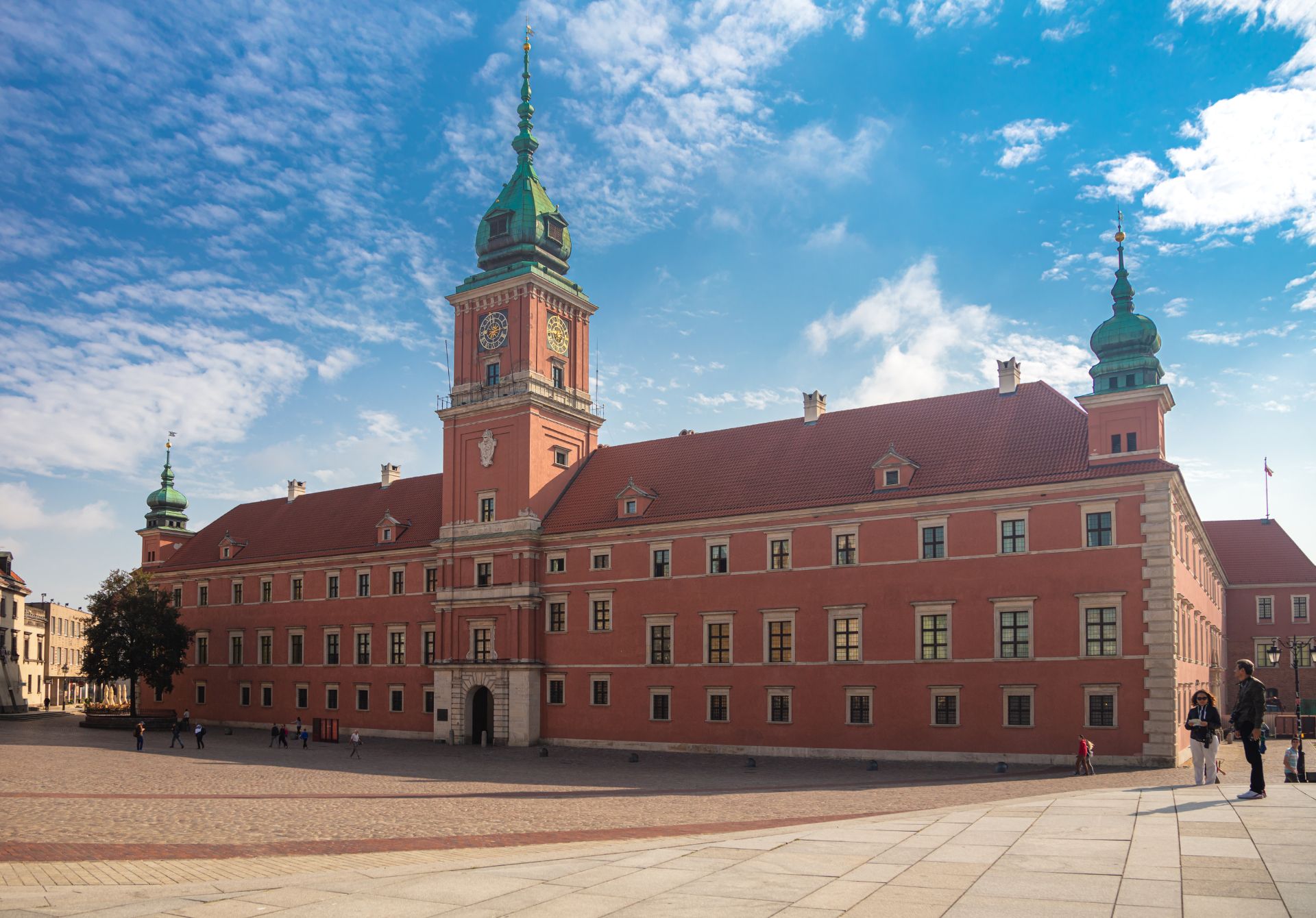Standing proudly at the entrance to Warsaw’s Old Town, the Royal Castle is a monumental testament to Poland’s rich history and indomitable spirit. This iconic structure, with its distinctive red-brick façade and green copper-roofed tower, has witnessed centuries of triumph and tragedy. From its origins as a medieval stronghold to its current status as a world-class museum, the Royal Castle embodies the heart and soul of the Polish nation.
Historical Background
Medieval Beginnings
The Royal Castle’s story begins in the 14th century when it was established as the official residence of the Dukes of Mazovia. Initially a wooden stronghold, it was gradually transformed into a brick Gothic-style castle under the reign of Janusz I the Old in the early 15th century.
Golden Age of the Renaissance
The castle’s most significant period of development came in the 16th and 17th centuries, coinciding with the Polish Golden Age. When Warsaw became the capital of the Polish-Lithuanian Commonwealth in 1596, King Sigismund III Vasa initiated a major renovation and expansion of the castle. The famous Sigismund’s Column, erected in 1644, still stands in Castle Square, commemorating this era of prosperity.
Architectural Marvel
Baroque Splendor
Throughout the 17th and 18th centuries, the Royal Castle underwent further transformations, embracing the Baroque style that was sweeping through Europe. Notable additions included the magnificent Great Assembly Hall and the Throne Room, adorned with intricate stucco work and elaborate frescoes.
Artistic Treasures
The castle became a treasure trove of art and culture. King Stanisław August Poniatowski, the last king of Poland, was a passionate patron of the arts. He established a picture gallery within the castle, featuring works by renowned artists such as Rembrandt, Rubens, and Bernardo Bellotto, whose detailed cityscapes of Warsaw later proved invaluable in the castle’s reconstruction.
Turbulent Times
Partitions and Occupation
The castle’s fortunes mirrored those of Poland itself. During the partitions of Poland in the late 18th century, the castle lost its status as a royal residence. Under Russian rule in the 19th century, it served various administrative functions but gradually fell into disrepair.
World War II Devastation
The darkest chapter in the castle’s history came during World War II. In September 1939, the castle was bombed by the German Luftwaffe, suffering significant damage. What remained was systematically looted and then deliberately destroyed by German forces in 1944 following the Warsaw Uprising. By the war’s end, only the basement, portions of the ground floor, and the Grodzka Tower remained.
Phoenix from the Ashes: Reconstruction
A National Effort
The decision to rebuild the Royal Castle was made in 1971, but preparations had begun much earlier. Immediately after the war, conservators and volunteers salvaged what they could from the ruins, including fragments of sculptures, stuccos, and burned canvases. The reconstruction was a monumental task that united the Polish people. Many citizens contributed financially to the rebuilding efforts, viewing it as a matter of national pride.
Meticulous Recreation
The reconstruction process was painstaking and relied heavily on historical documentation. Bernardo Bellotto’s 18th-century paintings of Warsaw proved invaluable, providing detailed depictions of the castle’s exterior. Inside, rooms were recreated using salvaged original elements, period furniture, and artworks repatriated from abroad or donated by other museums.
The Castle Today
Museum and Cultural Center
Today, the Royal Castle functions as a museum and vibrant cultural center. Visitors can explore over 100 rooms, including the meticulously restored Great Assembly Hall, Throne Room, and Marble Room. The castle houses a significant art collection, including two original Rembrandt paintings and works by Bernardo Bellotto.
Educational Role
Beyond its role as a museum, the Royal Castle serves an important educational function. It offers guided tours, workshops, and lectures that delve into Polish history, art, and culture. In 2018, the castle welcomed over 1,000,000 visitors, highlighting its significance as a major cultural attraction.
Preservation and Future Challenges
Maintaining the Royal Castle presents ongoing challenges. Conservation efforts are continuous, balancing the need to preserve historical authenticity with the demands of modern museum operations. Climate control, security, and accessibility improvements are constant concerns for the castle’s management.
Additionally, the castle faces the challenge of remaining relevant in the 21st century. Efforts are underway to incorporate new technologies, such as virtual reality tours and interactive exhibits, to engage younger generations and international visitors.
The Royal Castle in Warsaw is far more than a beautifully reconstructed historical building. It stands as a powerful symbol of Polish identity, resilience, and cultural rebirth. From its medieval foundations to its phoenix-like rise from the ashes of World War II, the castle embodies the enduring spirit of the Polish people.
As visitors walk through its grand halls and gaze upon its artistic treasures, they are not just observing history – they are participating in the ongoing story of a nation that has repeatedly defied the odds to preserve its heritage. The Royal Castle serves as a bridge between Poland’s glorious past and its vibrant present, inviting all who enter to become part of its extraordinary journey through time.

